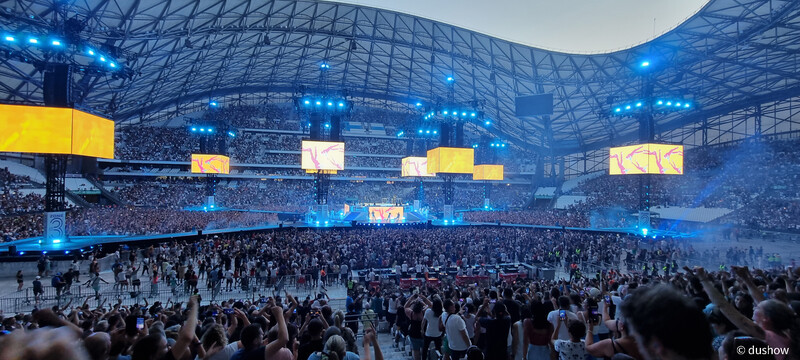Victorien Cayzeele – Narrative Light
Posted on June 6, 2023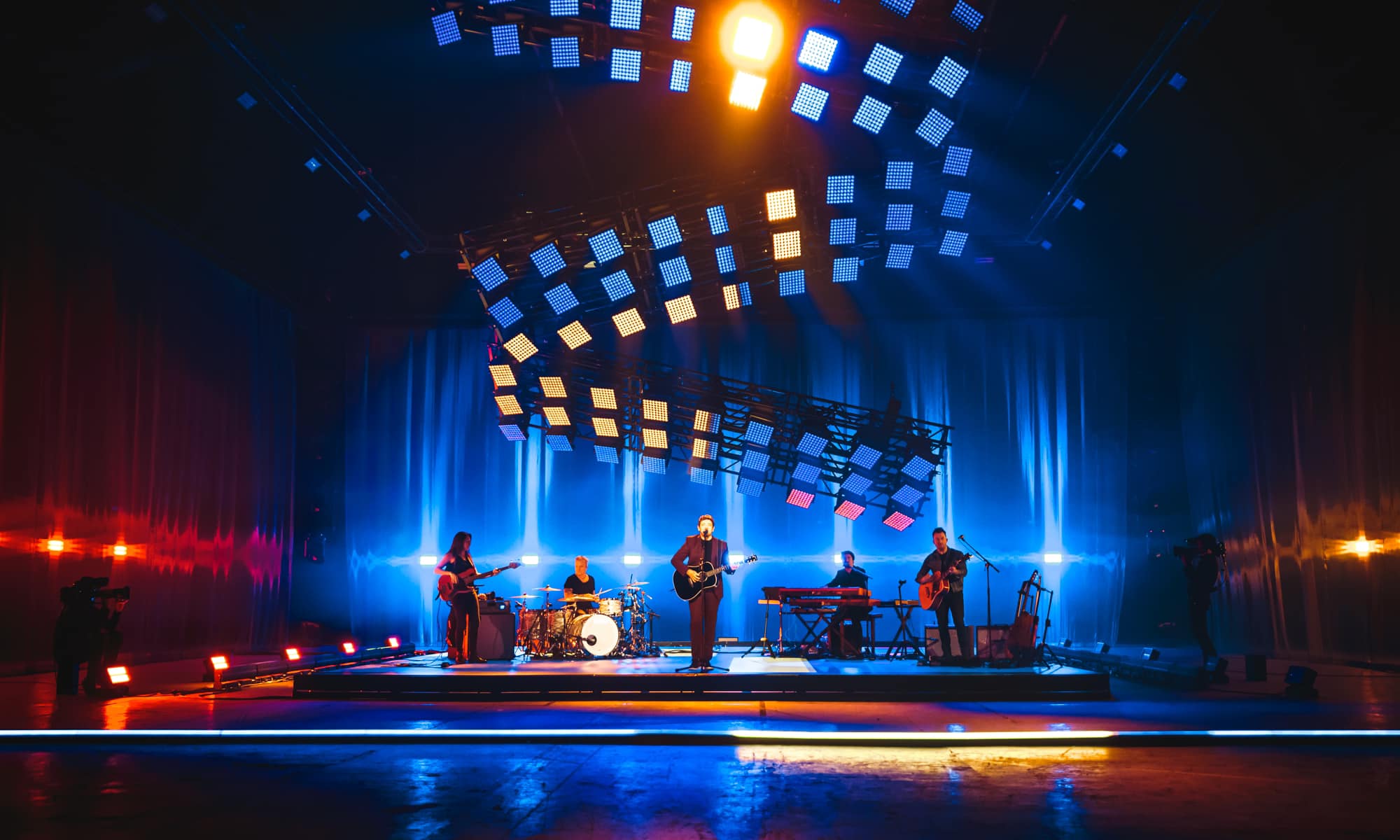
Not all stories are written in words. The glimmer of smiling eyes captured in a painting, the graceful movement of a dancer on stage, the morning sun shining through trees in the woods, all tell tales that cannot be conveyed in books. This Paris-based designer, and owner of Blue Like Cue, thoroughly embraces the spirit of nonverbal storytelling in his widely acclaimed work for a diverse group of clients including the MJR Music Award winning French Comorian rapper, Soprano.
For Cayzeele, the narrative he writes in light takes many forms, at times relying on bold colorizing, while at other favoring white, monochromes or subtle washes. This is not surprising, given the broad range musical genres represented in his list of clients. In addition to Soprano, he lights the multi-platinum artist Étienne Daho, whose soft pop sound contrasts sharply to that of the acclaimed rapper. Artists like the music collective FAUVE, pop duo AaRON, and EDM artist Vitalic have also benefited from his inspired design.
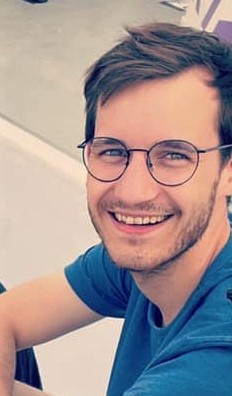 Although he weaves different elements into his storytelling designs, Cayzeele always look to the music of his clients to set the creative direction of his work. Within each song, he finds contrasting and complementary forces. Channeling each and balancing the two enhances the power of any design. How could it be any other way?
Although he weaves different elements into his storytelling designs, Cayzeele always look to the music of his clients to set the creative direction of his work. Within each song, he finds contrasting and complementary forces. Channeling each and balancing the two enhances the power of any design. How could it be any other way?
The desire to create with light first stirred in Cayzeele, when, as a 12-year-old, he attended a Jean Jacques Goldman concert in Lille, lit by Fred Peveri. A decade later, he was working as a lighting professional. Although he only recently turned 30, he has already been involved in large and impressive tours, leading us to believe that his own “story in light” still has many exciting chapters yet to be written.
Your company has an intriguing name. What’s the meaning of “Blue Like Cue,” and what’s the story behind you choosing it?
“It’s true, the name is not common. Choosing it was a nod to my client, the artist Étienne
Daho, who had a famous song called ‘Blue Comme Toi.’ When I was creating the company, I was thinking about several options, but I knew that the name would absolutely have to have the word ‘blue’ in it. Then, during a party at the end of a tour, the name came to me — it came! I was thinking thoughts like ‘blue like you’…and also things like ‘we have to change to blue on cue, to recall the light cue.’ That’s how the name was born.”
You just mentioned Étienne Daho; his synth-pop sound is quite different from that of another one of your clients, Soprano, whose music is rich in rap hip-hop influences. So, do you get in a different creative mind set, before you design a show depending on the type of music the client plays?
“Totally, each artist is different, and I use a different way of approaching the project each time, from key lighting to backlighting, I don’t see things the same way, from the choice of projectors to the way I will program the show. My style is still present, always, but there’s a different version of that style, depending on the client.”
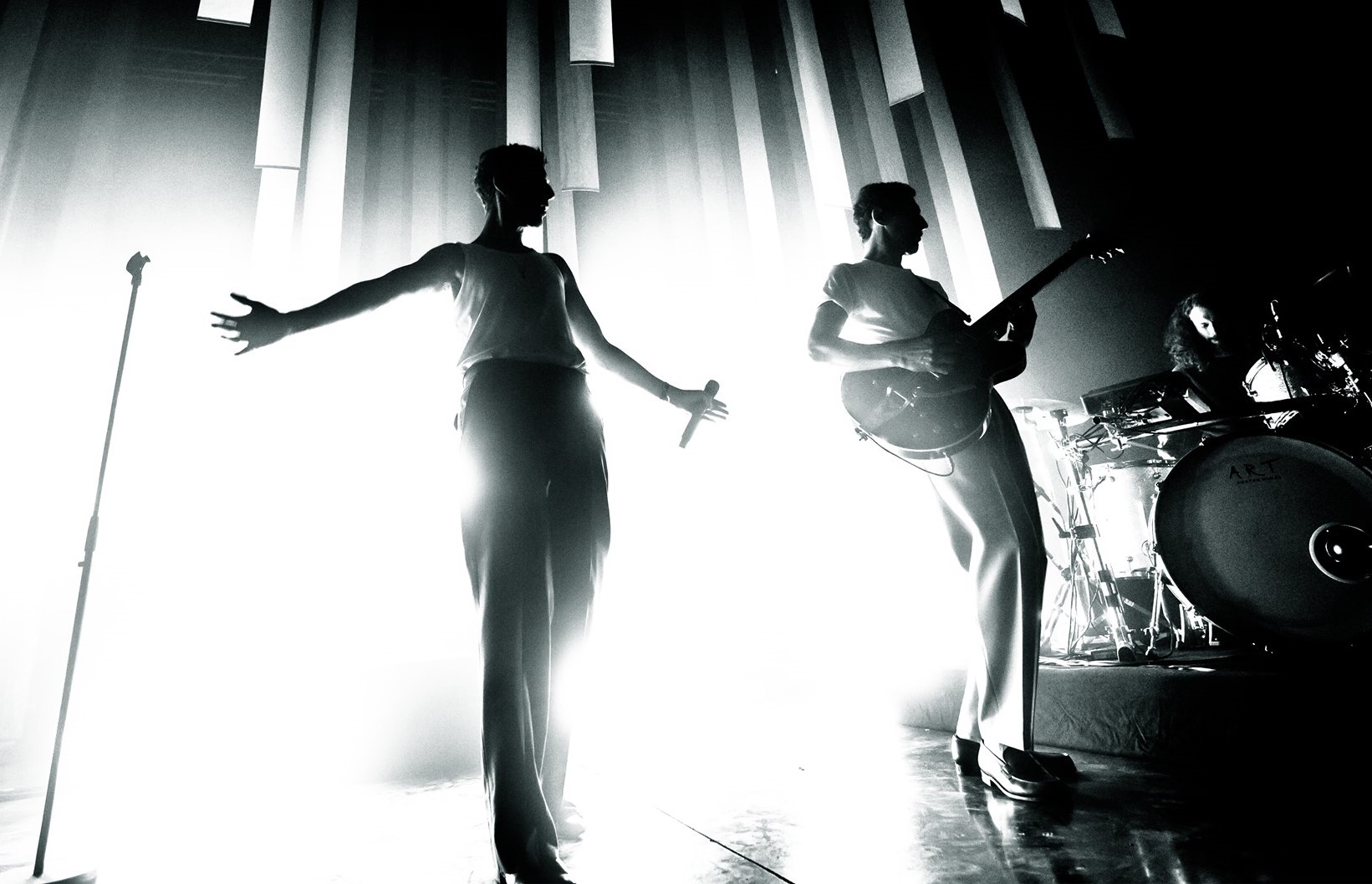
Speaking of your clients, many of them, like Soprano and Bilal Hassani, are extremely interactive with fans. How does that effect the way you approach designing for them?
“Most of the time in those cases, I try to have a more inclusive relationship with light, to allow an exchange of views between the public and the artist, to create cohesion, to have more light into the venue, for example.”
Of course, with a superstar like Soprano you do this in much larger arena and stadium venues. How do you “shrink” a massive space like that down so it becomes more intimate and fosters that connection between artist and fans?
“It’s all about contrast, even if you’re in a stadium, sometimes a good key direction is enough to draw attention and create a more intimate atmosphere. Sometimes I also take the opposite side, wanting to create a single place, by lighting the room very uniformly, so that everyone feels equally lit, like an equal footing.”
One of the many things that impressed us about the recent show you did for Soprano was how it built up as it went along, as if it were a narrative. Is there a story-telling aspect to your designs?
“Oh yes, absolutely 100-percent. I always try to find a story to tell with my designs. It doesn’t matter who the client is. It could be AaRON, Daho, Soprano, it makes no difference at all. I always look at my designs as if they were visual novels. Soprano is an artist who helps me a lot and inspires me in this regard, because he himself has a very written and narrative vision of his shows, he sees it as a story to tell.”
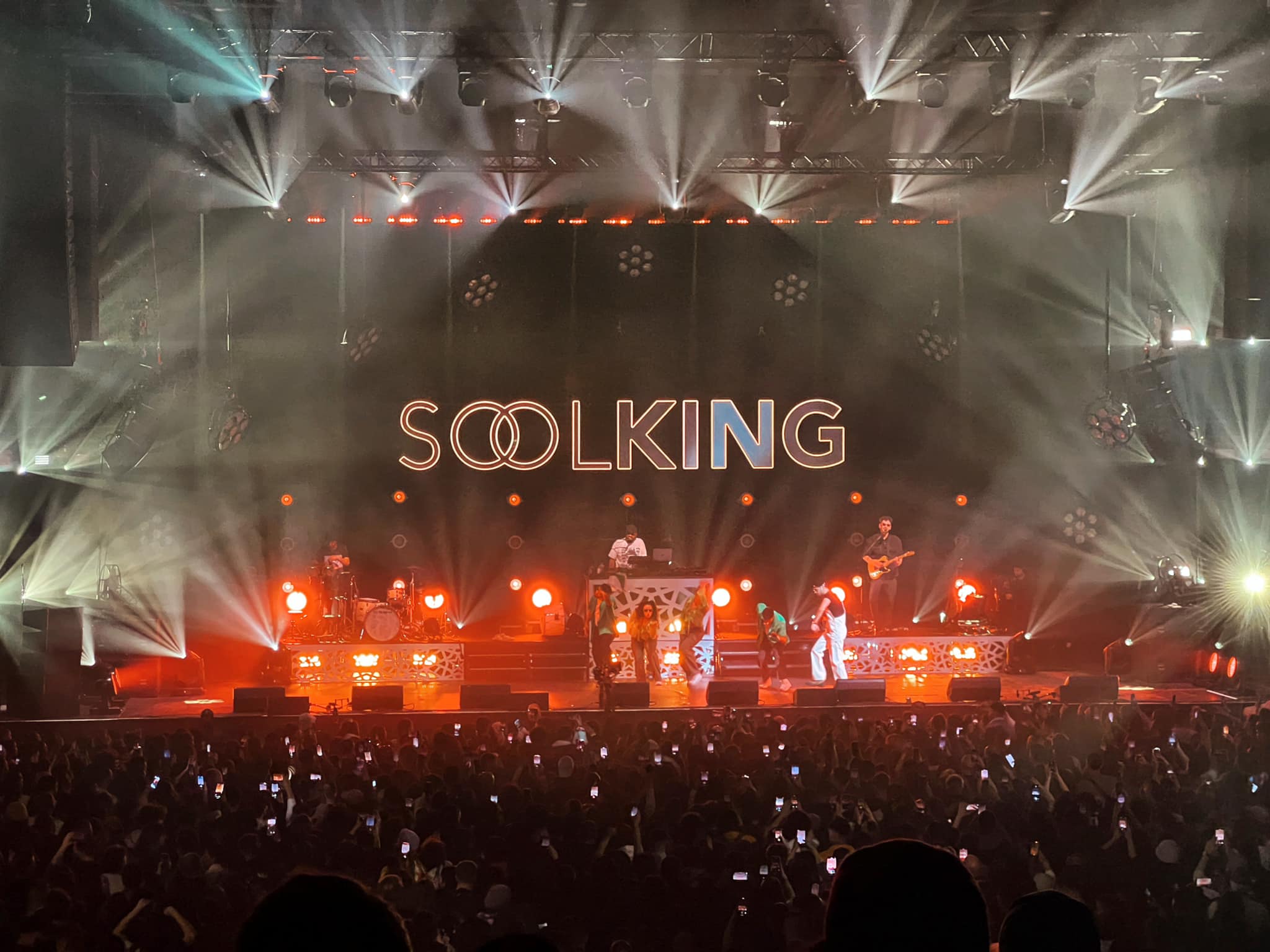
We really liked the way you balanced white light and monochromatic color palettes along with geometric forms in AaRON’s Anatomy of Light Tour. Can you tell us what your vision was for that design?
“Everything in that show came from the music, balancing between its intensity and darkness. I really like the opposing forces a single song can contain, AaRON is well suited to this vision, the chorus are quite explosive and luminous, so I used this aspect to justify the white intensity. In contrast there are other moments that are best reflected in to more saturated monochromes. In this particular show, all these shades were cut by the decor composed of columns, creating depth and relief.”
When you use white light heavily like you did on that tour, does it change your approach to design? Are there things you won’t do because you have fewer colors, or things you’re more able to do, because you don’t have to be concerned with colors?
“The white light allows me to decide and be in harmony with the stage design, to be more powerful, to draw a direction from the stage, which is quite difficult when you only work from diffuse sources such as strobes or wash.”
The Anatomy of Light tour was long awaited because of the COVID lockdown. Did you find that in the months following the lockdown, there was more expectation to resume tours on the part of artists and fans. Did this energy level influence your lighting ?
“Indeed, AaRON’s tour was one of the most delayed tours. This is to say the first show was done via a live stream, then the rehearsals gave rise to a concert without any audience but in front of cameras. The entire team and the artist were hungry to return to the venue and perform in front of the public. It was a very emotional moment after the blackout to start the first concert. We can say that the expectation of these reunions only strengthens the party, raises the message that I want to pass on, let it be bright, joyful, open and unifying.”
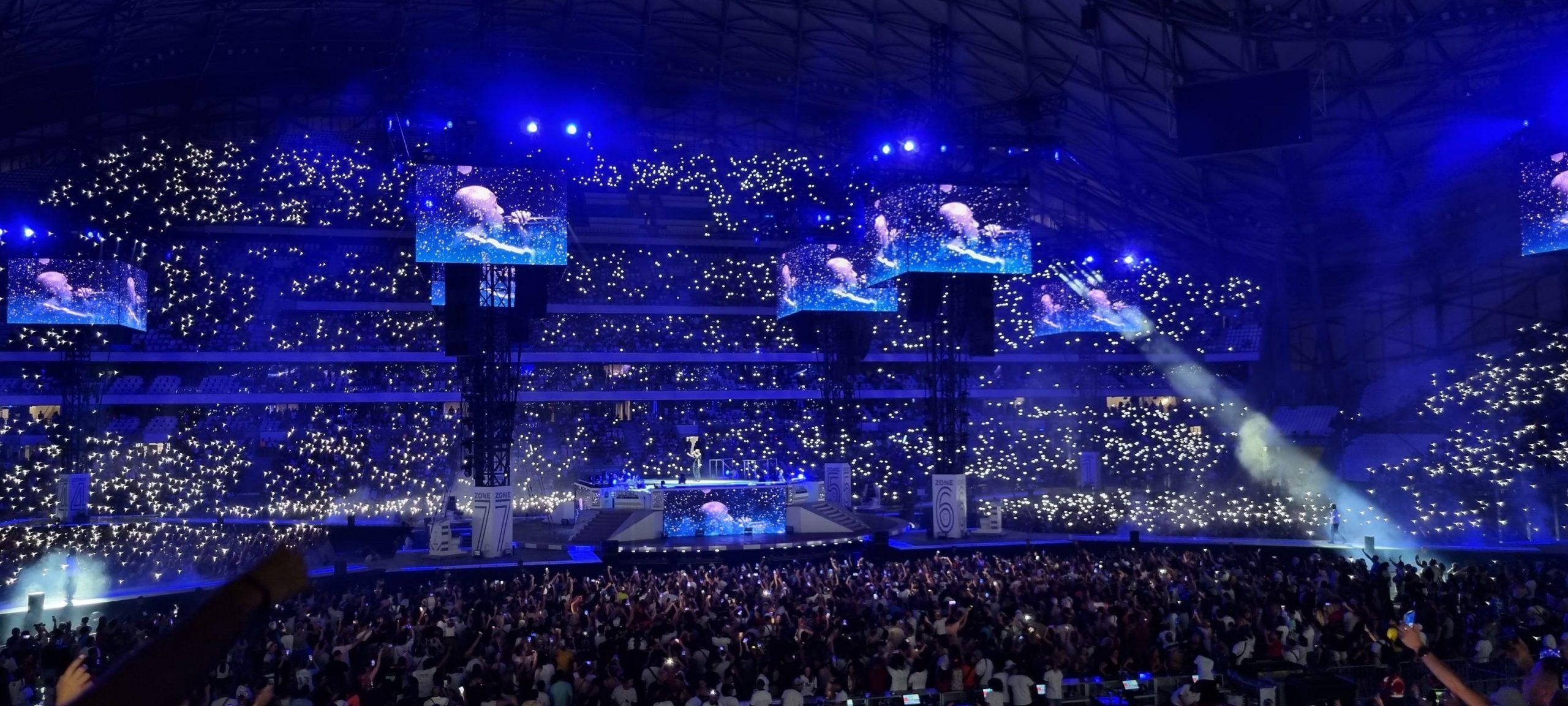
We notice that some of your shows have little or no video. What are your thoughts on used blow-through video walls in shows? How about projection video?
“For me, it must serve the purpose, it is useless to use video to use video. I have used video a lot as an object of light more than a simple diffusion surface. It must serve the artist and not by crushing it. I prefer a beautiful light design, rather than a concert which looks like a projection session. As far as video projection is concerned, I think it’s a great tool for working on textures and fabrics. It’s never easy to use it due to the lack of power, but the image is often softer and more discreet in my opinion.”
Is there any type of fixture that you feel is over-used on tour?
“For sure, beams, I don’t use them very often; I find it too aggressive. ”
How do you get inspired at the start of a project?
“First, the music, I systematically ask for the album, and songs, the words and what the artist wanted to convey. In relation to this I am also looking for a stage design, then a light design revealing the subject.
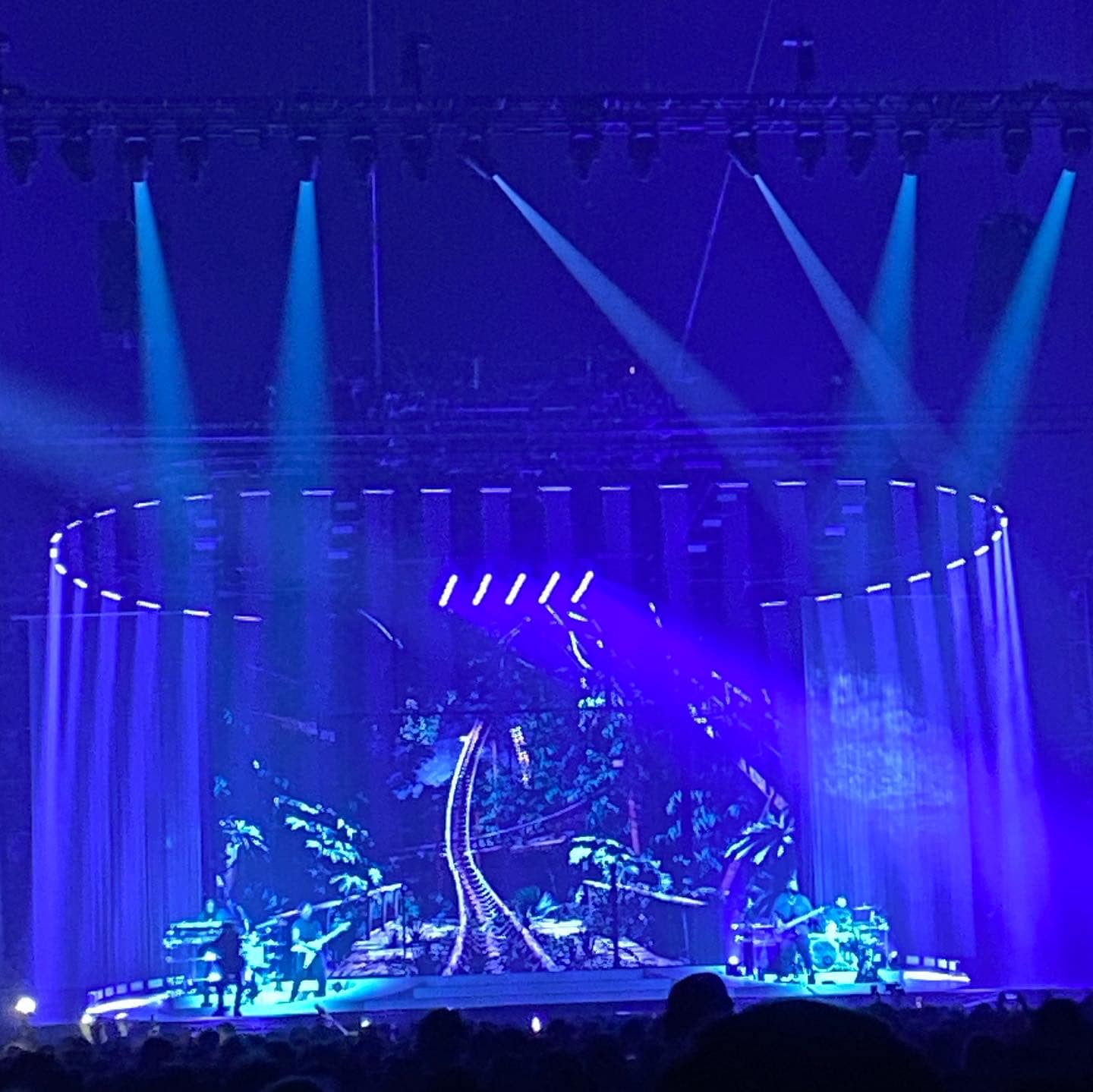
Is there one element of design that you always look at first when you start a project?
“Yes, often it is the topology of the project, the logistics, the means, of transport and the type of venue that we will go through.”
Do you ever procrastinate?
“Often, even if the rhythm is quite intense, it is important to take time to recharge your batteries and recreate your inspirations.”
What do you regard as your greatest strength as a designer?
“I think my greatest strength is my ability to read horizontally a show , for me everything is transversal in a concert, the light, the video, the stage design, the staging, dancers etc.”
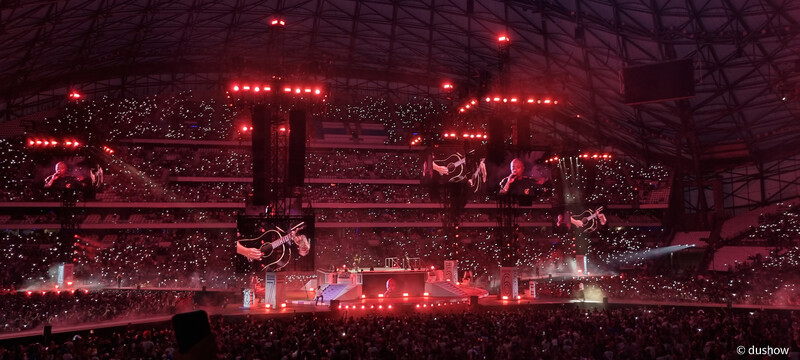
What profession would you have followed if you didn’t become a designer?
“Ha, ha, good question, I think something in heavy hauler, like crane driving or engineering, nothing to do with show business ”
If we interview you again in five years, how do you think you and the industry will be different than you are today?
“Uhm, it’s not easy to have a long term vision, but I know our industry is changing, the appeal of gigs is changing and the way we tour is changing, everything is getting more instantaneous and brief. With social networks, nothing stays a long time, you have to make the occasion and get noticed. As far as I’m concerned personally, I would like to aim for a show director position, I really like to have a more global vision on shows.”
What is the most important thing you want people to know about you as a designer?
“I think I would like to tell everyone that I am passionate, determined and surrounded by a great team.”
